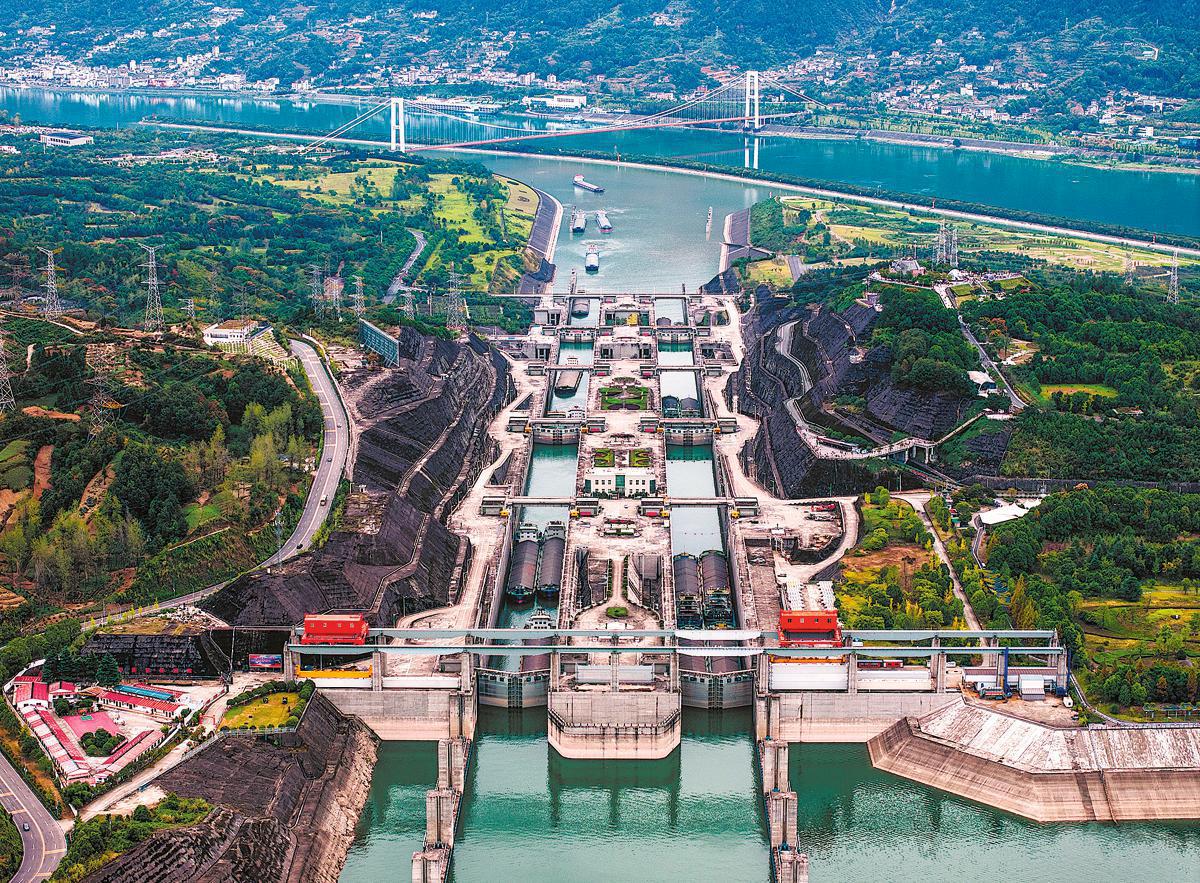Yangtze 'digital twin' helps mitigate impact of flooding
China Daily, December 18, 2024 Adjust font size:

Since its first hydroelectric generator came online in 2003, the Three Gorges Project has generated over a trillion kilowatt-hours of low-carbon electricity.
In the process, the use of 528 million metric tons of coal has been averted and over a billion tons of carbon dioxide emissions mitigated.
Last year, joining these green credentials, a "digital twin" of the Three Gorges Dam and the entire Yangtze River, came online aiming to allow people to be more than a step ahead when it comes to flooding along Asia's longest watercourse.
According to the developer of the digital twin, it has already helped to reduce casualties and property loss during flooding events on the Yangtze.
The digital twin is a digital copy integrating a data-driven virtual representation of the Yangtze River and the Three Gorges Dam. With a simple click of a mouse, key metrics of the Three Gorges Dam can be displayed, allowing monitoring of dam pressure and ensuring the safety of the Three Gorges Project, according to Yang Min, who works for the publicity center of the Changjiang Water Resources Commission of the Ministry of Water Resources.
The digital twin can simulate past flood events, and in real time, based on existing flood data in the upper reaches, predict future flood trends in the middle and lower reaches, Yang added.
As a result of the digitalization and simulation, early warnings for floods can be made earlier allowing people to evacuate more safely. It also makes flood defense more targeted.
When floods come, the areas that are severely affected are often the raised embankments separating agricultural land, known as polders.
There are many polders accompanied by dikes that run along both banks of the Yangtze River. The quality of these dikes is weaker and poses significant hidden dangers during flood defense, said Li Anqiang, deputy chief engineer of the Changjiang Institute of Survey, Planning, Design and Research Corporation of the Changjiang Water Resources Commission.
"This year, we established a comprehensive database for all 706 polders, as well as the entire mainstream and dynamic flow of the Yangtze River. When floods threaten the polders, we can notify local departments in advance," Li said.
On July 2, having calculated through the digital twin, the Changjiang Water Resources Commission issued warnings that approximately 2,430 kilometers of dikes in the middle and lower reaches of the Yangtze would exceed the water warning level, spanning Hubei, Hunan, Jiangxi, Anhui and Jiangsu provinces. On July 3 and 4 alone, 101 polders received warnings allowing authorities to take relevant action, according to Li.
A typical example is the warning issued on June 30 for the Guiliangzhou area in Jiayu county, Hubei, where immediate preparations for evacuation were advised due to rising water levels. On July 2, proactive measures such as breaching the dike were taken for flood diversion. Early warnings on June 30 allowed for the evacuation of people and property, greatly reducing flood damage, Li said.
Yang said the digital twin is able to demonstrate the three-dimensional extent of flood inundation in real time. The command staff, although physically in the meeting room, can visualize every part of the Yangtze River, enabling them to perceive the current state of flood control in the basin, reservoir operations, water anomalies and forecast trends with key data.
With the data, they can know the risks of scheduling decisions and fully comprehend the pros and cons of plans with a "God's-eye view", Yang added.
Li sighted the afternoon of July 5, when a sudden breach occurred in the main dike of the Tuanzhou area in Dongting Lake. To construct a new line of defense, the Changjiang Water Resources Commission used the flood diversion platform of the digital twin to quickly develop a flood inundation risk map and was able to dynamically analyze impact range, losses, population to be transferred and water depth under different scenarios.
After the floods, technicians examined the dikes for possible dangers and evaluated their stability.
This meticulous identification of vulnerable areas in the dikes forms the groundwork for future preventive actions and flood control strategies. "Without this process, we would have no idea what the dikes' present condition is," Li said.
"Presently, radar technology is employed to detect gaps and leakage in the dikes directly, offering a fundamental evaluation of their state, much like a medical examination."
Li Yi, a staff member at the Changjiang Institute of Survey, Planning, Design and Research Corporation of the Changjiang Water Resources Commission, was quoted by China Central Television as saying: "In late May this year, before the water levels rose, we conducted the first health check on the dikes. In early September, during the receding period, we conducted another check. By comparing the data from before and after the water rise, we provided scientific evidence for the safety assessment and reinforcement of the dikes."